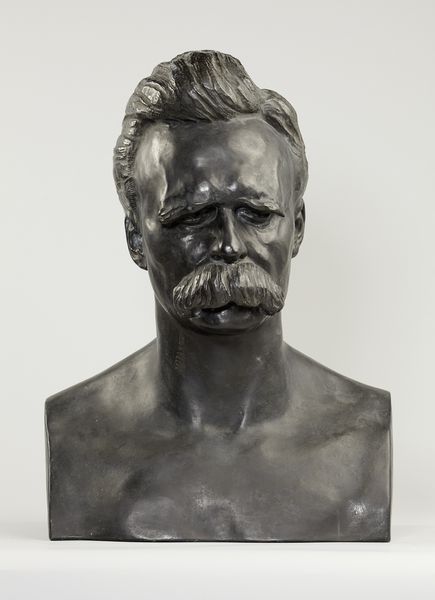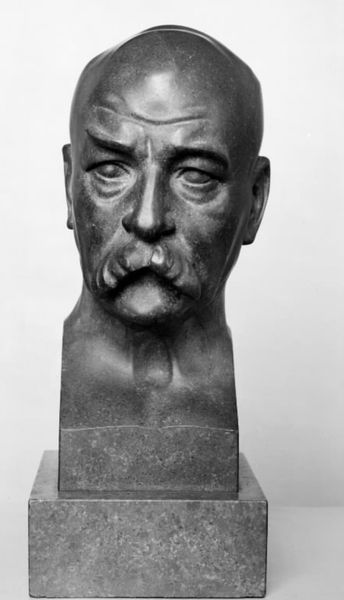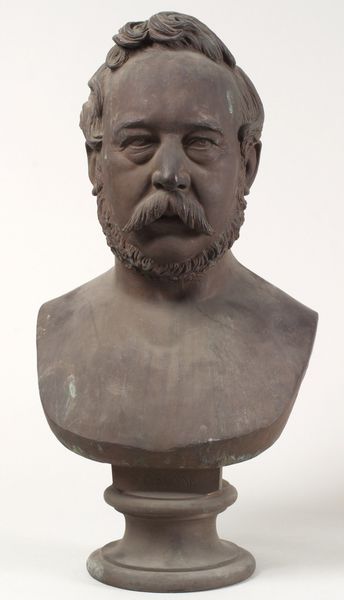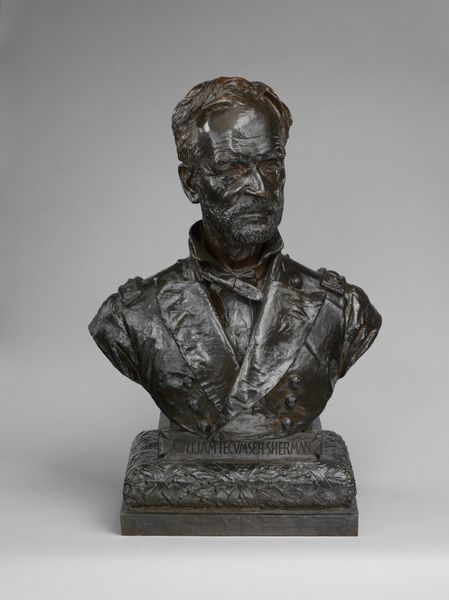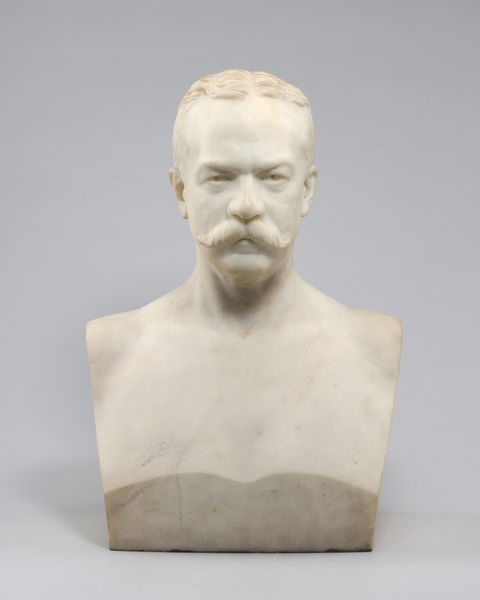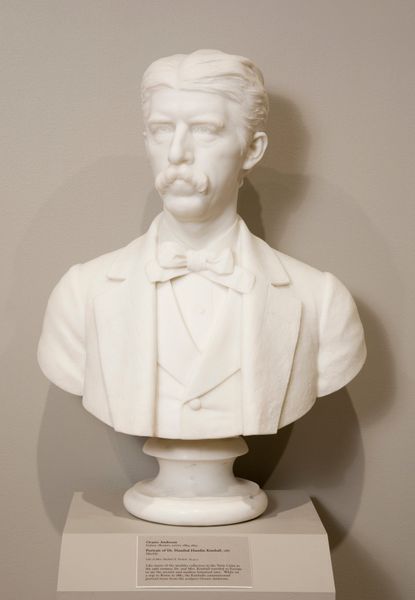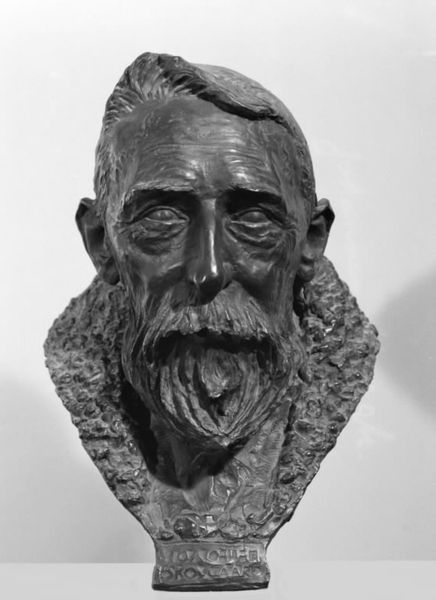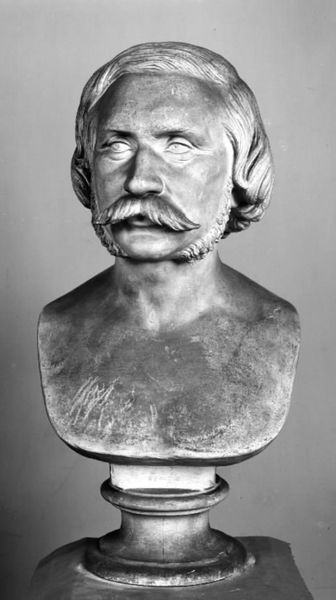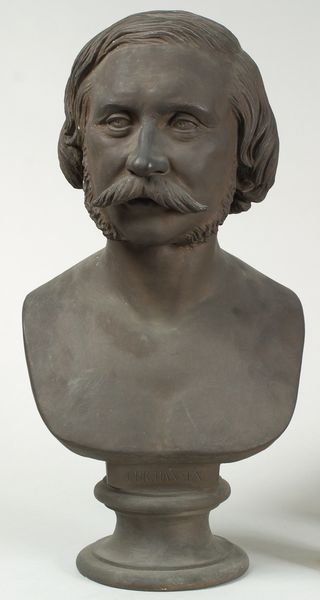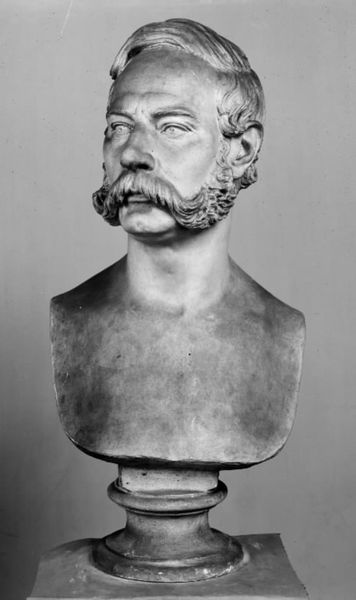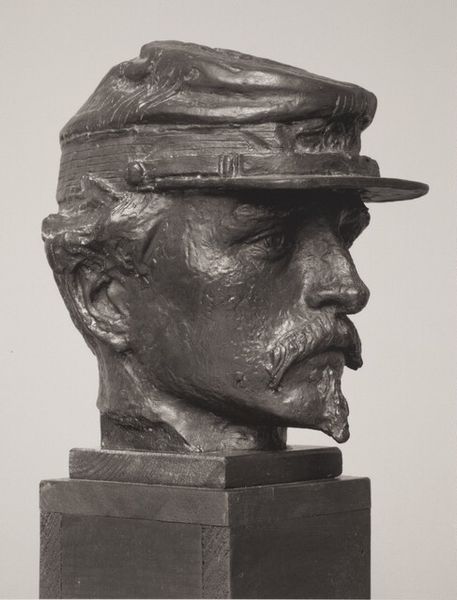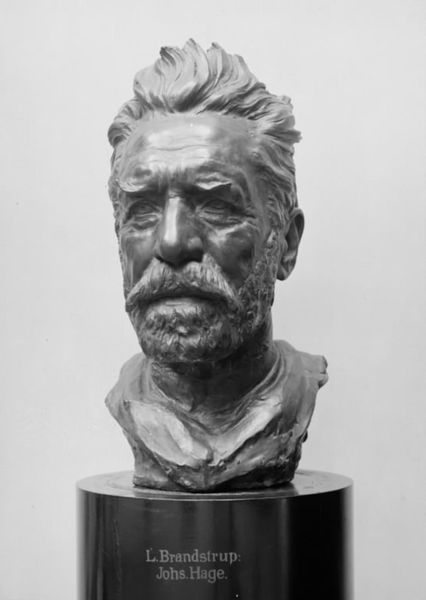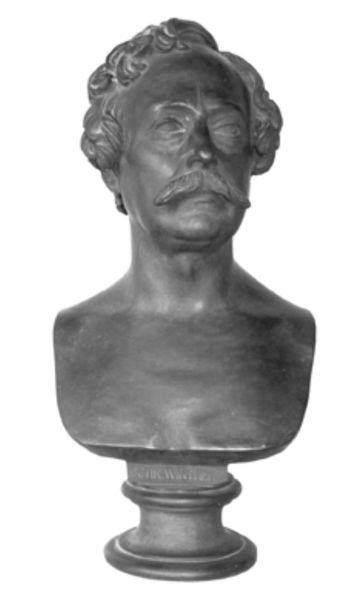
Dimensions: 63.5 x 53 cm
Copyright: Public domain
Editor: So, here we have Max Klinger's "Bildnis Friedrich Nietzsche" from 1904, a bronze sculpture. It feels almost… melancholic, despite the classical style. What strikes you about it? Curator: Klinger’s choice to depict Nietzsche, a figure so critical of societal norms, in such a classicizing manner is fascinating. What public image was Klinger trying to craft here? He positions Nietzsche as almost a Roman emperor, but one tinged with a very modern sense of suffering. Editor: I see what you mean about the Roman Emperor feel. Why do you think he went that way instead of something more avant-garde, given Nietzsche’s philosophy? Curator: Consider the context. Late 19th, early 20th century, Nietzsche's ideas were becoming increasingly popular, yet also deeply misunderstood and often twisted for nationalist purposes. By using Neoclassical form, Klinger might be attempting to legitimize Nietzsche, to present him as a serious, respectable thinker within the established cultural framework. Yet, the somber expression hints at the personal cost of such radical thought. Do you think this works? Editor: That’s a great point about legitimization. I guess I’m so used to thinking of Nietzsche as a rebel that it's strange to see him portrayed in such a...venerable way. It makes you wonder who the audience was, and what Klinger intended them to feel. Curator: Exactly. This sculpture becomes a site of negotiation between Nietzsche’s revolutionary ideas and the established societal structures. We must consider that artists are never isolated individuals, especially when it comes to a portrait. Editor: I'll never see another bust without wondering about its intended audience, thanks! Curator: It's this complex relationship with public consumption that brings history alive through art.
Comments
No comments
Be the first to comment and join the conversation on the ultimate creative platform.
